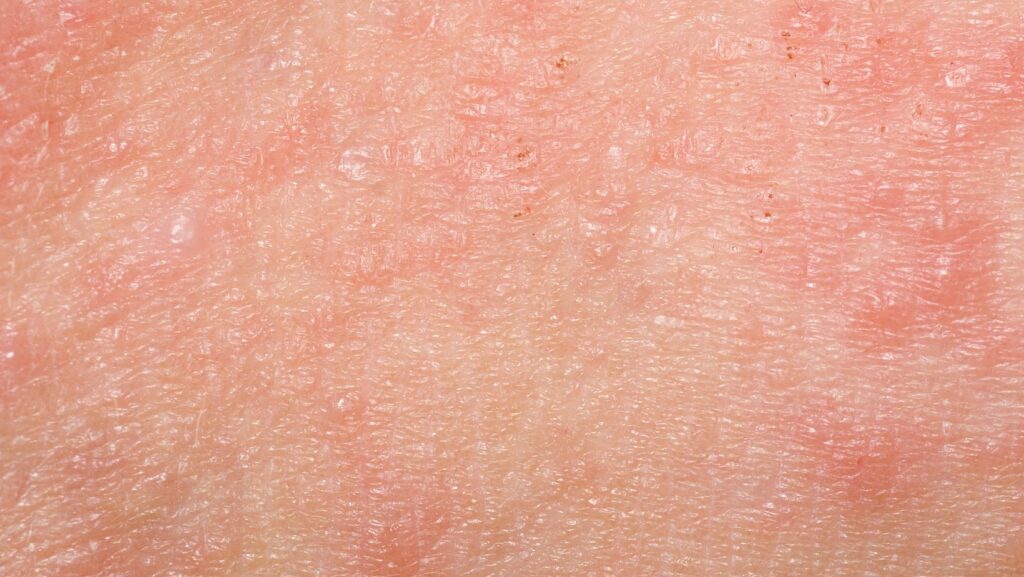They’re small, firm, pearly white bumps that seem to stick around no matter what you do — often appearing around the eyes, cheeks, and nose. These tiny cysts are called milia (or grains de milium), and while completely harmless, they can be stubborn. If you’ve ever wondered why they show up and what actually helps them fade, you’re in the right place.
What are milia?
Milia are miniature cysts that form when keratin — the same protein found in hair and nails — becomes trapped beneath the skin’s surface. They look like whiteheads but don’t have an opening, so squeezing or picking won’t help. In fact, doing so may cause redness or small scars.
Unlike acne, milia aren’t caused by bacteria or inflammation. They can appear at any age and on all skin types, though they’re most common around the eyes where the skin is thin and delicate.
Primary vs. secondary milia? and why that matters?
Dermatology classifies milia into a few buckets:
- Primary milia: Develop spontaneously, often in areas with lots of fine vellus hairs (think eyelids and cheeks). These are the most common in adults.
- Secondary milia: Form after the skin’s surface has been disrupted—say, after a burn, blistering rash, aggressive cosmetic procedure, or chronic sun damage. Here, normal skin turnover is altered, and keratin gets trapped as the skin heals.
Understanding which type you have can explain why they appeared and guide realistic expectations for prevention. Secondary milia, for example, may recur if the underlying trigger (e.g., frequent harsh peels or chronic irritation) continues.
Why do milia form?
Several everyday factors can contribute to their appearance:
- Slow skin turnover: Dead cells get trapped instead of shedding normally.
- Rich skincare products: Heavy eye creams, balms, or occlusive moisturizers can block pores.
- Sun exposure: UV damage thickens the outer layer of the skin, making it harder for keratin to surface.
- Post-procedure healing: Peels, burns, or rashes can temporarily disrupt the skin barrier.
- Ageing: Natural exfoliation slows with age, making milia more likely to appear.
Special cases: eyelids, kids, and post-procedure skin
- Eyelid milia: Because the skin is thin and the area is mobile, extraction here is best left to trained hands. Even small injuries can cause prolonged redness or post-inflammatory marks.
- Newborns and infants: Neonatal milia are extremely common and almost always self-resolve without treatment. If you’re unsure whether a lesion in a child is milia or something else, get it checked—but resist the urge to treat at home.
- After peels, lasers, or rashes: Secondary milia may appear during healing; they often diminish as the skin normalizes. Gentle, regular skincare and time are key.
How to manage milia at home?
The good news: you don’t need harsh scrubs or extraction tools. Gentle, consistent care makes a difference.
- Go for light exfoliation: Opt for mild acids such as lactic or mandelic acid a few nights per week. They help clear surface buildup without irritation.
- Introduce a retinoid gradually: Retinol supports natural cell turnover, reducing the chance of new milia. Start slow—two nights per week—and apply only a pea-sized amount, avoiding the eyelids.
- Simplify eye-area skincare: Use lightweight, gel-based eye products and avoid thick balms unless you have very dry skin.
- Cleanse thoroughly but gently: Remove sunscreen and makeup every evening using a non-stripping cleanser or micellar water.
- Stay sun-protected: Daily SPF prevents UV-related thickening of the skin, which in turn helps minimize milia formation.
When professional help makes sense?
If milia persist for months or form near sensitive areas like the eyelids, professional extraction is the safest and quickest approach. A qualified clinician or aesthetic practitioner can:
- Use a sterile needle or fine lancet to create a microscopic opening.
- Gently extract the keratin without trauma.
- Optionally recommend a mild peel or resurfacing session to refine texture.

These in-office methods are fast, precise, and heal quickly with minimal downtime.
Discover how experts treat milia safely here.
Prevention mindset: small tweaks, meaningful results
You can’t guarantee you’ll never get milia again—but you can lower the odds:
- Keep eye-area formulas simple and light; reserve rich balms for lips or severely dry patches.
- Build a steady (not aggressive) exfoliation cadence: abrupt over-exfoliation can backfire by irritating and thickening the stratum corneum.
- Use retinoids consistently if your skin tolerates them; they’re long-game tools for smoother texture.
- Protect with daily SPF to support healthier turnover and reduce secondary triggers from sun damage.
- Treat procedures with respect: follow post-care instructions closely after peels, lasers, or microneedling to keep the barrier calm as it heals.
Conclusion
Milia are common, benign, and manageable. Patience plus a smart routine can help prevent new bumps, and expert, precise extraction is the safest path when you want fast, predictable results—especially near the eyes. If you’re unsure whether a bump is milia or something else, get a professional opinion rather than poking at it.
What’s your experience with milia? Drop a comment below—what helped, what didn’t, and what you’re still curious about.
Author bio
This article was written by the team behind Clinique Main d’Or, a médico-esthétique practice. On our site, we share practical skin education and evidence-informed guidance—always tailored to real-life routines.

